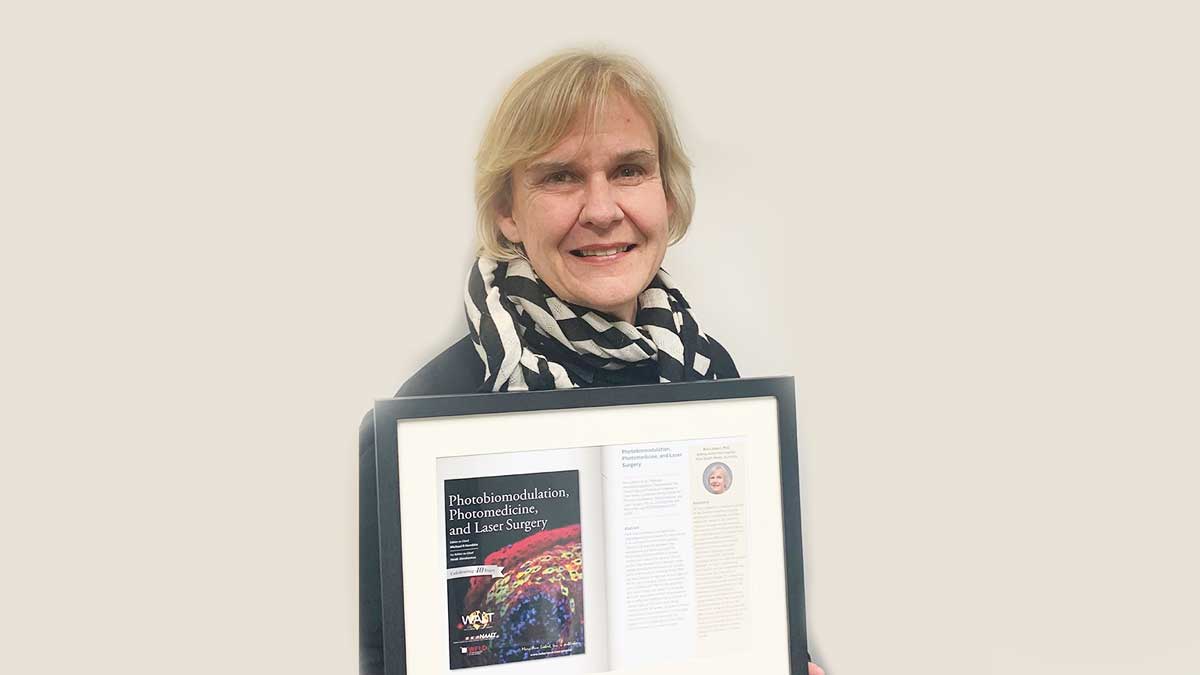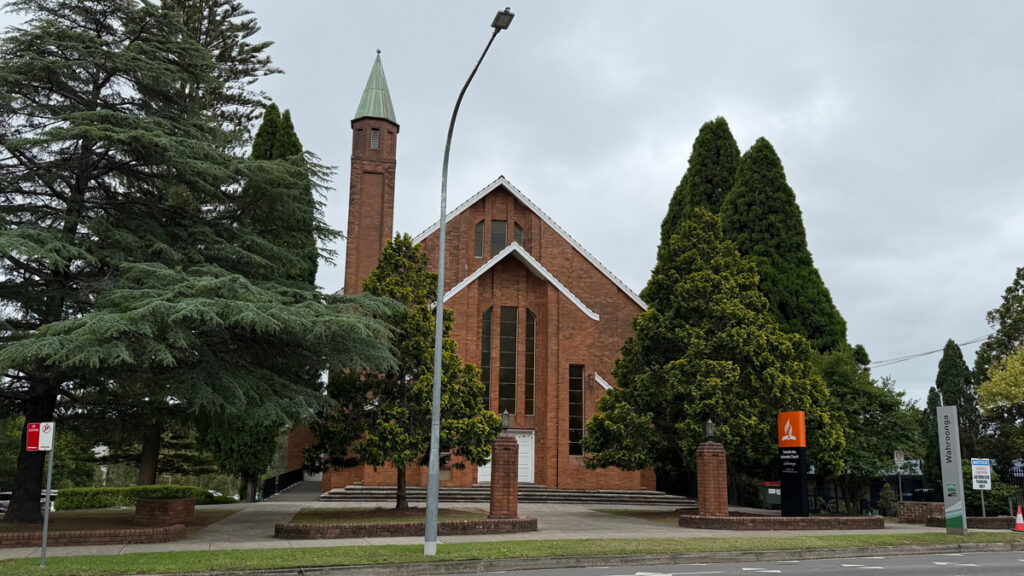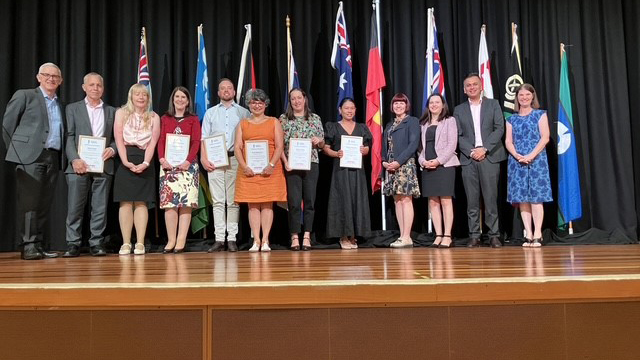A researcher at Sydney Adventist Hospital has won a Rosalind Franklin Society Award in Science for her paper demonstrating that light therapy is effective in reducing clinical signs of Parkinson’s disease (PD). The prestigious award recognises a published scientific paper by a female researcher.
Dr Ann Liebert’s paper, “Remote Photobiomodulation Treatment for the Clinical Signs of Parkinson’s Disease: A Case Series Conducted During COVID-19”, was published in the journal Photobiomodulation, Photomedicine, and Laser Surgery in 2021. It is the first such paper to demonstrate the mechanism of remote photobiomodulation (PBM) to help with the symptoms of Parkinson’s disease.
PD is a progressive neurodegenerative disease for which there is no cure and few treatment options. There is a strong link between the microbiome–gut–brain axis and PD.
PBM in animal models can reduce the signs of PD and protect the neurons from damage when applied directly to the head or remote parts of the body.
Dr Liebert’s Sydney-based trial, conducted at Sydney Adventist Hospital’s Photobiomodulation Therapy Clinic, enrolled seven participants who were treated with PBM to the abdomen and neck three times per week for 12 weeks.
Participants were assessed for mobility, balance, cognition, fine motor skill and sense of smell on enrolment, after 12 weeks of treatment in a clinic and after 33 weeks of home treatment.
A number of clinical signs of PD were shown to be improved by remote PBM treatment, including mobility, cognition, dynamic balance, spiral test and sense of smell.
“Our study shows PBM was shown to be a safe and potentially effective treatment for a range of clinical signs and symptoms of PD,” said Dr Liebert. “Improvements were maintained for as long as treatment continued, for up to one year in a neurodegenerative disease where decline is typically expected. No other treatment has achieved this.
“Several studies have observed that the gut microbiome in Parkinson’s patients is radically altered, with certain proteins travelling from the gut to the brain. Dysbiosis in the intestine indicates inflammatory disease. Applying light to the stomach stimulates the body to produce anti-inflammatory chemicals. Once inflammation is reduced, the body goes into homeostasis and can produce positive clinical effects.”
In winning the award, Dr Liebert said she is humbled to be standing on the shoulders of many people who have been working on understanding the mechanisms of light therapy since 1994.
“I am grateful also to Sydney Adventist Hospital (SAH), especially my mentor, co-researcher and head of research at SAH, Professor Geoffrey Herkes, for the support of my work and enabling this clinical innovation to change the treatment of many people around the world,” she said.
“From our current research, we have developed a home device that is TGA and CE marked (in Europe) for the treatment of symptoms of Parkinson’s disease.”
As a result of the research, Dr Liebert has cofounded an Australian company with the goal of using PBM to treat the symptoms of PD and other intractable neurodegenerative diseases.
Dr Liebert’s full paper can be accessed here.






